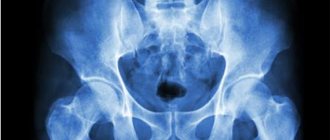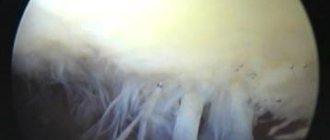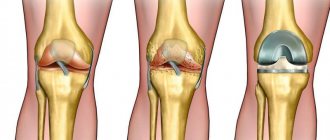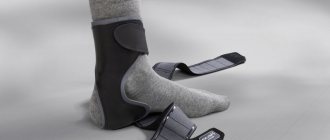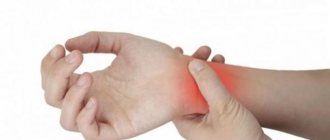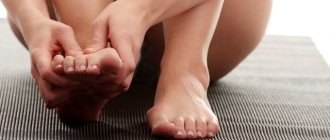What is the structure of a joint, and what functions does this joint perform? There are about 200 joints in the human body, including the smallest ones - the interphalangeal joints. Together with the bones, the articular joints are classified as the passive part of the musculoskeletal system, the task of which is to ensure smooth gliding and act as additional shock absorbers.
The largest and most important joints in the human body are the sternoclavicular, shoulder, elbow, ankle, knee and hip. Each articular joint consists of a bony epiphysis, cartilage tissue and an articular cavity where the synovial or synovial secretion is located. If we consider the knee separately, then in its cavity there is a meniscus. It consists of two pads of fibrocartilaginous tissue that serve to dissipate friction in the knee joint between the lower leg and the thigh. When it comes to the meniscus, it is usually referred to as the knee joint, but in humans it is present in the wrist, acromioclavicular, sternoclavicular and temporomandibular joints.
If we consider the main elements of joints, then the following structures participate in their structure:
- Joint cavity. It looks like a slit-like space, inside of which there is a synovium.
- Bone epiphysis. Filled with red bone marrow, which produces red blood cells.
- Hyaline cartilage. A type of cartilage tissue, it has a pearl-gray color, a stable consistency and a significant amount of collagen.
- Articular (synovial) bursa. It is a small fluid-filled sac. Helps reduce pressure and friction between tendon, muscle, bone and skin.
- Synovial membrane. The inner layer of the joint capsule contains synovial villi and secretes synovial fluid, which facilitates movement.
- Synovial fluid. It is a small component of the intercellular fluid. The main role of synovial fluid is to reduce friction between joint surfaces during movement.
According to statistics, it is the knee, elbow and hip joints that are most often susceptible to the development of diseases. Let us consider in detail the structure of each of them.
What is a joint
Joints can withstand enormous loads - up to hundreds of kilograms. They are movable joints. In structure, these are cartilages located in a special protective capsule with synovial fluid. The latter softens friction during movements and prevents abrasion of cartilaginous surfaces.
Joints located in movable places of the skeleton are called diarthrosis (true joints). The thickness of the cartilage in them can be different - depending on the intensity of movement: from 0.2 to 6 mm. Diarthrosis can be simple (consist of two articular surfaces) and complex (consist of several).
Shoulder girdle
It contains two low-moving joints that provide connection between the upper limb and the collarbone and scapula. The sternoclavicular joint is formed by formations of the same name, connecting the torso and arm. It provides additional mobility in the shoulder and protects it from excessive lateral movement.
The acromioclavicular joint is formed by the outer end of the clavicle and the process of the scapula (acromion). It can be felt at the very top and outer point of the shoulder, like a bony protrusion. It provides simultaneous movement of the shoulder girdle and arm.
What does a joint consist of?
The movable joint always contains:
- articular surfaces - different in shape and size of the base of the bones;
- cartilage is fibrous tissue that covers the surfaces of bones;
- articular capsule – covers the articulating bones, is intertwined with blood vessels and nerve endings, so if damaged, a person experiences pain;
- articular cavity - a closed space with synovial fluid, where menisci sometimes fall;
- synovial fluid - lubricates the cartilaginous surfaces; if it is deficient, arthrosis of the knee or other joint develops;
- periarticular tissues - muscles and ligaments (fix bones, provide them with strength and different intensity of movement).
The strongest joint in the human body is the hip.
Articulations in invertebrates.
Invertebrates have many types of joints, but they have their own characteristics. Thus, at the junction of mollusk shells there are often small processes in the form of denticles that prevent the shell valves from rotating relative to each other or from separating them. If the joints of mammals are controlled by two groups of opposing muscles, then the shell valves can be controlled by only one muscle, balanced on the opposite side by elastic connective tissue. In insects, crabs, crayfish and other arthropods, the body is covered with chitin, a dense leathery substance. In certain areas of their cover there are joints that allow the mutual movement of body parts. In these places, the epidermis is folded inward, forming folds, and is not covered with chitin. In some echinoderms, namely sea urchins, many articulations are located between calcareous plates that cover the body and form the chewing apparatus (the so-called Aristotelian lantern), and these plates are connected in the same way as the parietal bones of the human skull. Spines, especially pronounced in sea urchins of the genus Arbacia
, are attached to the exoskeleton using ball-and-socket joints, which are controlled by two groups of muscles, one of which is located circularly and the other radially. In the Aristotelian lantern there is a peculiar swinging joint between two elements: the arch of the jaw and the bracket; contraction of the muscles on the outer side of the lantern lowers the outer end of the bracket, respectively, its inner side rises and lifts the roof of the lantern, thereby creating a pump effect.
Why are the joints so different?
During the process of evolution, the joints of the human body have changed and adapted to the load. Elbow - has become as convenient as possible for work. Only he is able to rotate the forearm around its axis and perform characteristic movements of unwinding and twisting.
The head of the humerus is not limited in the wide circular movements of the arms, unlike the head of the femur, since these joints have different functions. The knee joint has a special structure, because it bears the maximum load when walking upright.
Human joints have evolved over the years
Possible rotation
Articular joints provide the nature, amplitude and trajectory of movements of the human bone skeleton. Rotation occurs around biomechanical axes, of which there may be several. Among them are vertical, sagittal and transverse. The classification of joints according to this criterion distinguishes several types.
- Uniaxial - have a single axis of rotation. For example, the interphalangeal joints provide flexion and extension of the fingers; other movements are impossible.
- Biaxial - two axes of rotation. A typical example is the wrist joint.
- Triaxial - movement in all possible planes - shoulder, hip joints.
How joints differ in the number of joints
The joints in our body differ in the number of bones they connect:
- simple - connect two bone surfaces, for example, like the knee;
- complex - consist of several simple joints that move separately;
- complex - contain intra-articular cartilage, dividing the joints into two chambers;
- combined - include several elements that function together, although isolated from each other (example - interphalangeal).
The most mobile joint in our body is the shoulder
Movable joints
Also on topic:
CONNECTIVE TISSUE
- the most common in animals. In joints of this type (true joints), the bony surfaces are covered with articular cartilage, and the joint itself is enclosed in a capsule of fibrous connective tissue, lined from the inside with a synovial membrane. The cells of this membrane secrete a lubricating fluid that facilitates movement in the joint. Diarthrosis includes block-shaped and cylindrical (rod, rotational) joints, as well as spherical, flat (movements are sliding), saddle-shaped and condylar (ellipsoidal).
Types of articular surfaces
Articular surfaces are also different:
- cylindrical - have the shape of a cylinder;
- block-shaped - look like a transversely lying cylinder;
- helical - an angled groove and a comb on the articulated surfaces form a helical line;
- ellipsoid - one end of the bone is convex, the other concave;
- condylar - one bone of the articulation has a rounded process, the second resembles a depression;
- saddle-shaped - the surfaces are located one on top of the other (the bones move along and across);
- spherical - convex and concave surfaces (circular movements);
- cup-shaped - a deep depression on one bone covers most of the area of the head of the second;
- flat – due to almost identical dimensions, movements are limited;
- tight - joints of bones of different shapes and sizes are closely connected and have low mobility.
Scull
Almost all the bones of the human skull are connected by a continuous type - synostosis. In newborns, some areas of the joints have a soft tissue structure - they are called fontanelles. Their presence is due to the passage of the child through the birth canal and the “adjustment” of the baby’s head to it. In an adult, they are completely replaced by bone tissue.
The only joint of the head is the temporomandibular joint, which connects the lower jaw and the articular surface of the temporal bone. It is surrounded by many ligaments and covered by a powerful muscle - the chewing muscle. Thanks to its work, we can open our mouths and chew food.
Joints also vary in functionality and degree of mobility:
- Freely movable joints (diarthrosis) - elbows, knees, shoulders, wrists. They are more likely than others to be susceptible to arthrosis and arthritis.
- Amphiarthroses - allow slight movements of the bones. This category includes joints that are less known to us - intervertebral discs, the pubic symphysis, and the sphenodvicular joint on the foot.
- Synarthrosis is a fixed connection between bones, cartilage and bone tissue, for example the connection of teeth with the skull, the sutures of the skull.
The structure of joints is fibrous, cartilaginous and synovial. Fibrous consist of tough collagen fibers, such as the sutures of the skull. Cartilaginous are groups of cartilages that connect bones to each other, for example diarthrosis between the ribs and costal cartilage, intervertebral discs.
Synovial - filled with synovial fluid, which absorbs the load. With its deficiency, the preconditions for arthrosis of the hip, knee or other joint with high mobility are formed.
What are joints made of and what function do they perform? Briefly - in the video:
Fixed joints.
Also on topic:
BONE
Synarthrosis is a direct connection of two bones without a gap between them. The connection may involve a thin layer of fibrous connective tissue or cartilage. There are four types of synarthrosis in the skull. Sutures are connections between the flat bones of the skull; a typical example is the suture between the parietal and frontal bones. Schindylosis is a form of synarthrosis in which the plate of one bone enters a gap or notch in another bone. The vomer (median bone of the facial skull) and the palatine bone are connected in this way. Gomphosis is a type of synarthrosis in which the conical process of one bone enters the depression of another bone. There is no such articulation of two bones in the human body, but this is how the teeth are connected to the jaw. Synchondrosis is a continuous connection of bones through cartilage; it is characteristic of young people and occurs, for example, between the ends and the middle part of long tubular bones; in adults, these cartilages ossify. A similar articulation between the sphenoid bone, located in the middle of the base of the skull, and the occipital bone remains in the child for several years after birth.
Most common joint injuries
Joints cannot exist separately from bones, so the most common injury is a fracture. It occurs as a result of direct pressure, shock or overload. Another danger is dislocations. Due to strong blows to the joint area or too sudden movements, the bone joints relax and lose their natural anatomical shape.
Sudden movements also often lead to sprained or torn ligaments. And if the periosteum is damaged, severe pain occurs, since this area is well innervated. If there is a crunch in the joint, it swells or hurts, you need to see an orthopedist.
Crunching in the joint and pain is a reason to go to an orthopedist
Arthralgia
Pain associated with joint function is called arthralgia. The nature of its manifestation can be superficial or deep, permanent or temporary, affecting one or several cartilaginous joints at once. The disease most often affects the largest joints in the human body: knee, elbow, hip. Smaller ones are affected much less frequently.
Arthralgia often becomes an accompanying symptom in various infectious diseases, especially those occurring with febrile conditions. In diagnosis, various examination methods are used with the mandatory collection of anamnesis. Laboratory tests involve counting the number of platelets in the blood, as well as other tests and samples.
Which joints are susceptible to arthrosis?
Arthrosis is degenerative, irreversible changes in cartilage tissue. They occur against the background of a deficiency of synovial fluid, that is, they affect exclusively the synovial joints. Most often, treatment for osteoarthritis is prescribed to older people, since the disease develops against the background of age-related changes.
When cartilage is deformed, the gap narrows and limits mobility in the knee, shoulder or elbow. Pain and morning stiffness appear in the joints. If the disease is not treated, the articular surface can fuse with the bone, leading to disability.
There are different approaches to treatment. Modern orthopedists prefer conservative methods. One of the most effective is intra-articular injections of synovial fluid prostheses, for example Noltrex. The drug is injected inside the joint capsule, where it mechanically moves apart the rubbing cartilage, improves the viscosity of the synovium and returns mobility to the joint without pain.
Arthritis
A large number of diseases affect the supporting apparatus, causing dysfunction of the joints. The classification of arthritis distinguishes infectious, non-infectious, traumatic and concomitant (with other diseases). A detailed list was approved in 1958 at the Congress of Rheumatologists.
Infectious arthritis, which makes up a large group of diseases, can be specific, caused by the damaging effects of known types of pathogens, for example, the tuberculosis bacillus, or evolutionary. Particularly distinguished are diseases of the joints according to the authors: Sokolsky-Buyo, Bekhterev, Still.
Non-infectious arthritis is also called dystrophic. They occur quite often, the etiology is very diverse. Among the reasons may be age-related changes, negative effects of environmental factors (hypothermia, excessive stress), hormonal and metabolic disorders (gout, thyroid disease, hemophilia, etc.).
Traumatic arthritis develops from blunt trauma or joint injuries. In addition, they can occur due to prolonged exposure to vibration.
A large number of arthritis are accompanied by other diseases not related to the musculoskeletal system. Chronic forms of psoriasis, systemic lupus erythematosus, dermatoses - all can involve the joints in the process. In addition, arthritis is caused by leukemia, some diseases of the lungs (sarcoidosis) and the nervous system. Lead intoxication also often provokes a degenerative process in the joints.
